Improving Build-to-Order Operations with Digital Signage
Meticulous execution in the build-to-order (BTO) business model is the key to survival for many small- and medium-sized enterprises (SMEs) across a variety of industries. To prove their BTO ability, these businesses must demonstrate the capacity to deliver highly customised products and services at a rapid speed. However, in today's fast-paced, ever-changing business environments, the risk of errors and inefficiencies is higher than ever.
To overcome such challenges, many BTO operations are turning to digital signage systems. These systems provide high resolution graphics and video for guidance and training on standard operating procedures (SOPs) and step-by-step processes. With the ability to change content in an instant at one location or many, digital signage systems help employees quickly adapt to new processes and achieve higher performance levels at a cost-effective price.
In this paper, we provide eight tips on the benefits and advantages of digital signage systems. We also offer advice on what to look for in buying such a system for use in communicating SOPs on the factory floor. In terms of hardware, we particularly focus on the benefits of the new Intel® Atom™ processor D2700 and its use in one of our own digital media players, the NEXCOM NDiS 126.
The NEXCOM NDiS 126 is a fanless embedded computer powered by the latest Intel® Atom™ D2700 2.13GHz processor, integrated Intel® GMA 3650 graphics, and up to 4GB DDR3 memory. This combination is powerful enough to support full HD 1080P video content over dual independent displays at a low rate of power consumption. The product can be configured with VGA and HDMI, or two HDMI ports.
Digital signage systems
A stand-alone digital signage system consists of a digital media player with content management capabilities and one or more electronic display screens. Systems with multiple media players will have a separate content management server designed for the creation, storage and distribution of content to the media players over a network.
Industrial digital media players are embedded computing devices encased in a rugged chassis. A wide variety of display screens, including LCD, LED, and plasma screens, are available for use with these (and won’t be discussed in this paper). Digital signage systems are becoming increasingly popular in public and private environments because, unlike static signage, their content can be quickly digitally updated, saving the time and cost of printing paper signs and instructions. Digital signage systems also are an excellent tool for communicating real-time information throughout a facility or even multiple facilities located thousands of miles from each other.
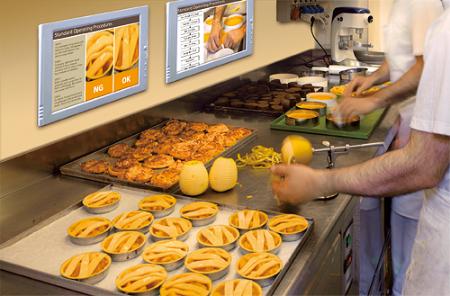
In factories, digital signage is excellent for providing explicit guidelines and visual diagrams to help keep workers from making avoidable mistakes and missing assembly steps. In chain restaurants, digital signage can provide precise steps and amounts for making each dish, as well as guidance for complying with health regulations. In a healthcare setting, digital signage can be used to detail proper execution of medical procedures that carry a high risk of bacterial infection, such as catheter insertion and replacement.
TIP 1: Quality communications ensure quality work
SOPs are essential to nearly all industries, and to ensure product and service quality, these SOPs must be communicated to employees. But how those SOPs are communicated is almost as important as the SOPs themselves. Better than just words are images. As the adage says, “a picture is worth a thousand words.” In the age of digital displays, this is even truer. Today’s digital signage enables superior delivery of SOPs through:
- Clear, sharp sequential images and explanatory text or narration
- Flash animations providing step-by-step instructions
- Powerful multimedia, including video
- Animated 3D models
- Interactive training and presentations
For the most effective delivery of SOPs, BTO operations should look for digital signage systems designed to run high definition (HD) graphics and video. This allows the greatest precision and accuracy in the presentation of complex diagrams or concepts. By choosing a digital signage system that supports high resolution content and displays, businesses can help their staff carry out work assignments with scrupulous attention to detail.
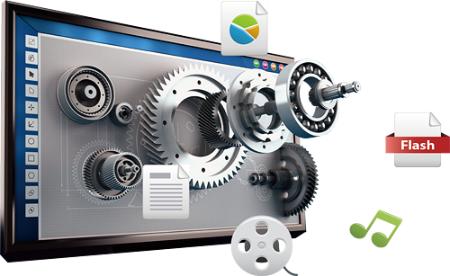
TIP 2: Two screens are better than one
When numerous challenges or variables at particular stages in a process can affect product and service quality, two screens can often be better than one. For this reason, many digital signage systems are designed to run two screens in either clone mode (both screens display the same content) or distinct mode (each screen displays different content).
Digital signage that supports more than one display can serve various purposes. It can enable the coverage of multiple aspects of a process at once. It can provide a big picture view and a closeup view simultaneously. It can support two workers doing the same task but each needing their own screen. Or it can provide an economical way to provide guidelines or instructions to a larger group of employees at once than a system that just supports a single screen.
The Intel® Atom™ processor D2700 is an excellent example of a very affordable processor that can drive two displays simultaneously. This processor includes multiple digital display output options, including HDMI and DisplayPort.
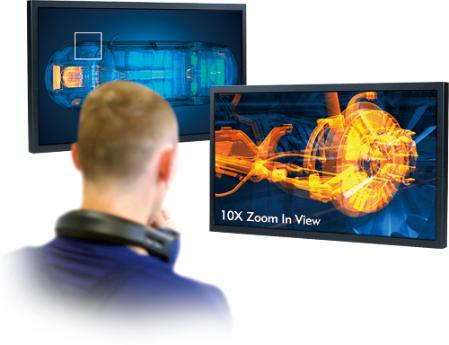
TIP 3: Quality and performance don’t have to add up to a high price
As embedded devices, many digital signage systems employ the latest advances in system-on-chip (SoC) technology to deliver excellent processing performance and graphics quality at reasonable prices. For example, digital signage players, such as the NEXCOM NDiS 126, use the Intel® Atom™ processor D2700 as their SoC. This processor includes a dedicated media engine that enables full 1080p high-definition playback of videos and Blu-Ray content.
The Intel® Atom™ processor D2700 performs demanding video processing that was formerly offloaded to a separate graphics platform – and does it at a fraction of the power consumption. What’s more, its integrated Intel® Graphics Media Accelerator 3600/3650, combined with integrated memory controller, delivers enhanced performance and system responsiveness. The Intel® Atom™ processor D2700 provides up to a 2x improvement in graphics performance compared to the previous generation platform.
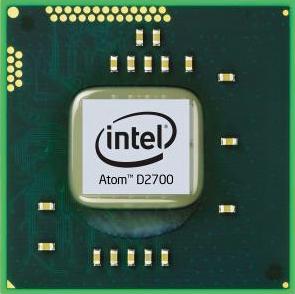
Bottom line? By making an external graphics processing unit (GPU) unnecessary, this processor enables HD digital signage systems to be more affordable and less power hungry.
TIP 4: Return on investment (ROI) doesn't have to be rocket science
When one considers the importance of having each step meticulously followed in BTO operations, using digital signage systems to guide personnel through SOPs and complete every step of a process properly practically guarantees ROI.
Ways digital signage systems can cut production and service costs and deliver ROI to BTO operations include:
- Reducing costly errors and accidents by providing clear instructions and diagrams.
- Increasing efficiency by helping personnel work through tasks in the most efficient manner.
- Reducing the amount of post-sale support and slashing the return rate by improving product quality.
- Enhancing brand reputation through product/service improvements and on-time delivery.
- Reducing training time and costs by giving better instructions on an interactive step-by-step basis.
- Enabling faster value from new hires through providing more on-the-job support.
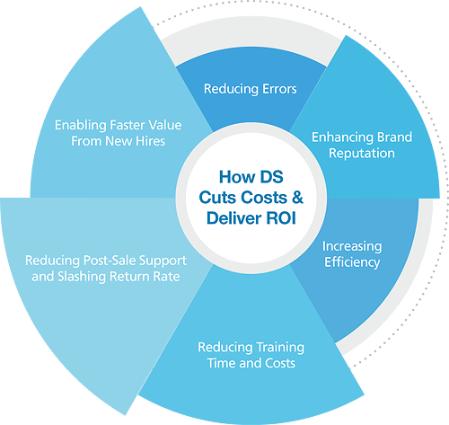
Each of these savings and advantages mount up over time to repay the cost of a digital signage system many times over. Such ROI makes digital signage systems a great way to get the maximum profit and value out of the BTO business model.
TIP 5: Information should flow at the speed of business
Under the BTO business model, SOPs are often subject to changes that make the efficient transfer and circulation of information critical to sustaining high product and service quality, as well as productivity. For this reason, it pays to select a digital signage system that supports the fast transfer of information over standard networks.
Network connectivity ensures that the consistency of distributed SOPs across the network can be assured in spite of frequent content updates. As a result, the risk of errors in document management is reduced and every staff member is kept on the same page.
Again, the Intel® Atom™ processor D2700 in particular, paired with Intel® NM10 Express chipset, is ideal in this situation. It supports high bandwidth interfaces and multiple network connections, plus has the requisite processing power to receive updates in the background while continuing to perform its signage duties.
This processing performance is due to two factors:
- As the first Intel® Atom™ processer based on 32nm process technology, the Intel® Atom™ processor D2700 runs at 2.13 GHz, breaking for the first time the 2.0 GHz core speed barrier for embedded Intel® Atom™ processors. This translates into significant performance improvements and the best-in-class response times of any Intel Atom processor.
- Equipped with Intel® Hyper-Threading Technology, the Intel® Atom™ processor D2700 provides high performance-per-watt efficiency for increased system responsiveness in multi-tasking environments. With Intel® Hyper-Threading Technology, one execution core is seen as two logical processors, and parallel threads are executed on a single core with shared resources.
Naturally, the processor is only part of the picture. A digital media player like the NEXCOM NDiS 126 comes equipped with LAN and WWAN connectivity that enables content updates from a content management server located in the same building or miles away. Content updates are executed nearly instantaneously – a huge advantage over paper-based signage that requires reprinting and redistribution each time there is a change.
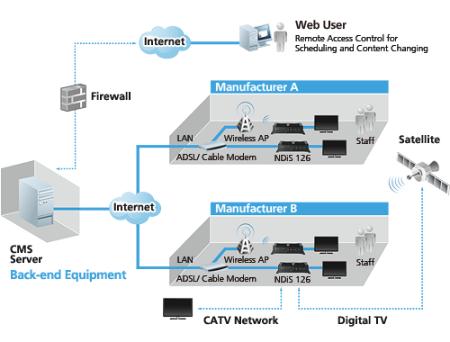
Comprehensive training programs that include SOPs are a great way to improve quality, efficiency and safety. One of the best ways to deliver this training is through digital signage systems incorporating interactive technologies like touchscreens. Such systems enable anytime training without the need to schedule training staff.
Gone are the days when training required the production of costly paper-based training materials. Interactive training enables employees to learn complex tasks at their own speed and test their knowledge at key points in the training. This helps reinforce instruction and keep employees engaged in the material. SMEs can also use digital signage systems to periodically test employees on SOPs and deliver remedial sessions in areas where employees need a refresher course.
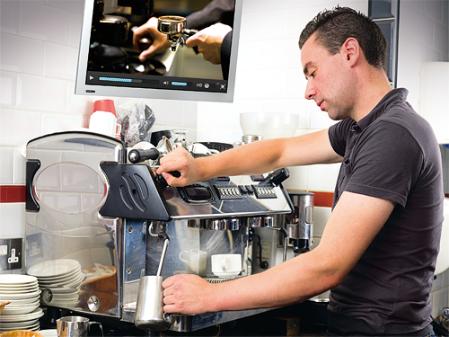
To be effective for training purposes, a digital signage system should provide:
- Excellent HD graphics for animations and video to engage the user
- Fast response to user input so users stay engaged
- A content design and management system that makes it easy to quickly create effective interactive training materials
Teaming a platform like the NEXCOM NDiS 126 based on the Intel® Atom™ processor D2700 with a touchscreen-capable display makes the first two objectives easy to achieve. Such a system is designed for fast response to user input and the delivery of sharp HD graphics.
Content management software that runs on Intel® architecture is available from a wide variety of sources. A good example is NEXCOM’s own PowerDigiS V2 software. This application provides an excellent tool for the creation of interactive materials. It enables designation of active areas on the screen and corresponding actions for when those areas are touched. It also provides easy-to-use templates for use in organising and presenting content.
TIP 7: The best things come in small packages
Space is at a premium in most BTO factories. But with all the advances in embedded design, powerful digital signage systems are available in small packages.
Each year the continual shrinking of process technology by Intel enables smaller footprint devices to do more and offer more. The latest Intel® Atom™ processors use 32nm logic technology and Hi-k metal gate transistors to shrink the size of the processor core while at the same time enabling the integration of many components, such as graphics accelerators and media decoders, which used to require a separate unit on the circuit board. This enables more energy efficient devices that offer more capabilities and functionality for their size.
The power reductions afforded by the 32nm process technology also enable quiet, fanless designs that won’t contribute to the sound levels of the factory floor. Companies like NEXCOM use all these features to make powerful media player designs in small form factors that are easy to find space for in any environment. Measuring just 185mm x 147mm x 49mm, the NDiS 126’s footprint is smaller than a sheet of A5 paper.
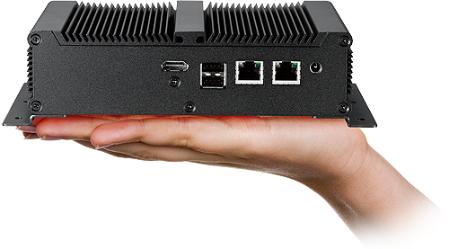
TIP 8: Reliability keeps the production line humming
In working environments, heat, dust, humidity, and vibration all threaten to cause system performance degradation and premature failure. Therefore, reliability is a key factor to consider in digital signage systems for BTO operations
Digital media players should use processors designed for rugged conditions. Processors such as the Intel® Atom™ D2700 processor are designed for low Thermal Design Power (TDP) to reduce cooling requirements and enable smaller, sleeker industrial designs.
Players should be housed in a trouble-free fanless enclosures designed to keep out dust, protect against shock, and disperse heat efficiently. Again, the NEXCOM NDiS provides an excellent example. The system is housed in a rugged, fanless enclosed aluminum chassis designed to keep out dust and transfer heat through its cooling fins. This design protects against humidity and vibration, providing reliable operation and performance with minimum maintenance.
Conclusion
BTO is a demanding business model that requires careful attention to ensure orders are accurately filled and product and service quality are maintained to high standards. Digital signage systems enable SMEs to quickly and flexibly cope with a wide range of factors in making sure that SOPs and specifications are followed and customer expectations are met.
SMEs looking to use digital signage systems should follow the eight tips provided in this paper to ensure a good balance between performance and value that ensures excellent information flow, real-world reliability, and solid ROI. Such systems will help SMEs rise to the challenge of producing small lot-sized and highly customised products with higher quality and efficiency, while improving their profit margin.
About Nexcom
NEXCOM International Co., Ltd. is an Associate Member of the Intel® Embedded Alliance. Founded in 1992 and headquartered in Taipei, Taiwan, NEXCOM is committed to being your trustworthy partner in building digital infrastructure. NEXCOM offers innovative and versatile industrial computing solutions and security surveillance applications built around industry leading technology, localised customer support, and worldwide logistic services. Over the past decade, NEXCOM's continued growth has been achieved through market strength rather than via business acquisition. Today NEXCOM has global turnover in excess of USD 100 Million and subsidiary offices in seven countries.
Mr Steve Ritchie
Nexcom UK Limited
10 Vincent Avenue
Crownhill, Milton Keynes
MK8 0AB
Tel: 01908 267121
E: sales@nexcom.eu
W: www.nexcom.eu
Issuers of news releases, not Targetwire, are solely responsible for the accuracy of the content.